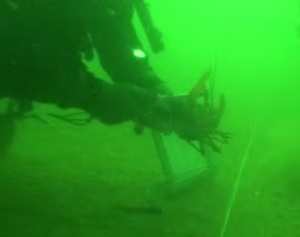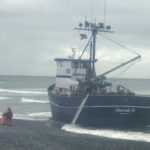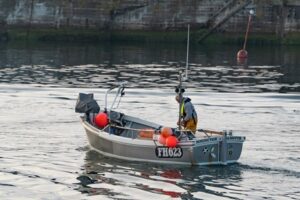Daily Archives: March 22, 2019
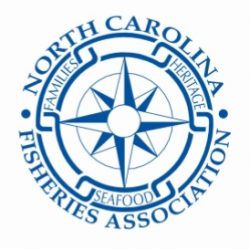
North Carolina Fisheries Association Weekly Update for March 22, 2019
>Click here to read the Weekly Update<, to read all the updates >click here<, for older updates listed as NCFA >click here<20:42
EPIRB distress beacon saves three from sinking boat near Chatham Islands
Three crew have been rescued from a sinking crayfish boat this morning thanks to a floating distress beacon that had only been recently installed. At 8.20am the beacon was activated from Western Reef, 32km northwest of the Chatham Islands. The owner, who was on land, confirmed there were three people on board the 10m cray fishing boat, Mary Ellen 2. Two fishing boards headed to the scene and picked up the three crew members from the bow of the partially submerged vessel. Rescue Coordination Centre NZ senior search and rescue officer Dave Wilson said the beacon saved their lives. >click to read<17:28

British cannot close off fishing waters post Brexit, says France
French Minister of Agriculture Didier Guillaume said Thursday it was “not possible” for Britain to close its waters to French and other EU fishermen after Brexit. “We do not accept that… that is not what we want,” Guillaume told a meeting of fisheries professionals in the Channel port of Boulogne. “We shall leave not one fisherman in difficulty because of Brexit,” concluded Guillaume, stressing that the French fishing industry should not suffer as a result of Britain’s departure from the bloc. >click to read<15:45
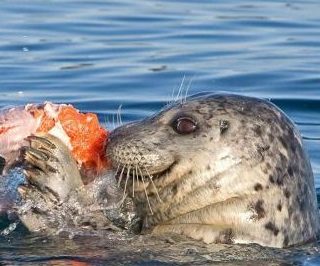
The facts about pinnipeds
Recent studies estimate the harbour seal population to be 80,000 in Lower Mainland waters. Harbour seals eat 10-18 pounds of food each day. At an average of 15 pounds, they consume 1.2 million pounds a day, or 438 million pounds a year. Add to that: thousands of California sea lions who migrate to the area annually to prey on our salmon runs and who weigh two to three times as much as a harbour seal and likely eat 30-60 pounds a day. Add to that: pinnipeds prefer the guts of fish, often leaving the edible carcass. Add to that: their reproductive rate is in excess of 12 per cent annually. These facts then beg the following questions: Bruce Smith, Halfmoon Bay>click to read<13:48

Southeast pink salmon forecast cause for concern
As the days grow longer and summer plans start to materialize, 18 million is a number on the mind of many across Southeast Alaska, especially those in numerous industries that rely on salmon fishing. Eighteen million is the number of pink salmon the Southeast forecast shows could be harvested in the 2019 commercial fishing season.,, “Salmon is the biggest portion of my income for sure,” said Stan Savland, commercial fisherman out of Hoonah and 20-year seiner. “The forecast is very alarming. I’m worried about this season because our recent odd year cycles are really what’s been carrying the seine fleet to make it.” >click to read<13:00
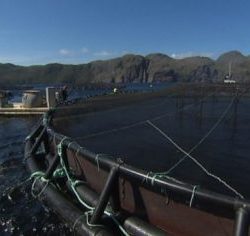
Near Fish Farms, Lobster Catches Plummet
Lobster fishers catch fewer market-sized lobsters, and see fewer fertile females, in areas close to fish farms in Nova Scotia, according to new research led by Inka Milewski, a research associate at Dalhousie University in Halifax. Lobster fishers working in Port Mouton Bay, Nova Scotia, keep detailed records of when and where they fish and how many lobsters they catch. By analyzing 11 years of fishers’ records, Milewski and her colleagues found that the reduction in catch was greatest in the areas closest to open-net-pen aquaculture sites and lowest in the areas farthest away. On average, the scientists calculated a 42 percent drop in the lobster catch and a 56 percent drop in observed egg-bearing females in years when the fish farms were active in the bay. >click to read<11:20
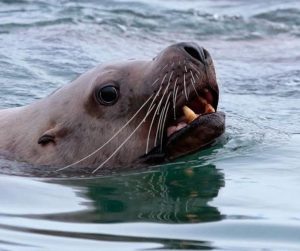
Another Sand Point fisherman is chomped on by a sea lion
A sea lion lunged from the Sand Point harbor and bit a fisherman’s leg in the Aleutian Islands fishing town that’s now experienced three injurious run-ins with the massive marine mammals in two years. “The sea lion came out of the water on the back of the fishing boat Celtic and bit a male fisherman on the right thigh,” said Sand Point police officer David Anderson.,,, All three attacks in Sand Point have involved fishermen bitten on the leg by a Steller sea lion. >click to read<09:55






